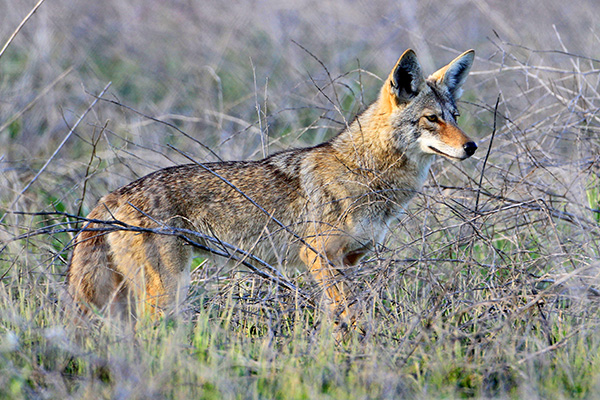History Of Coyotes in SC
Coyotes are small to medium predators that are found throughout South Carolina. Native to the western U.S., the range of coyotes did not extend east of the Mississippi River until the 1940s. Coyotes reached South Carolina in the late 1970s when they were introduced to the state by private individuals for hunting purposes. Through a mixture of human-facilitated movement and natural population growth, they quickly spread throughout the state. By the 1990s, they were found in every county.

(Photo by Adobe Stock)
